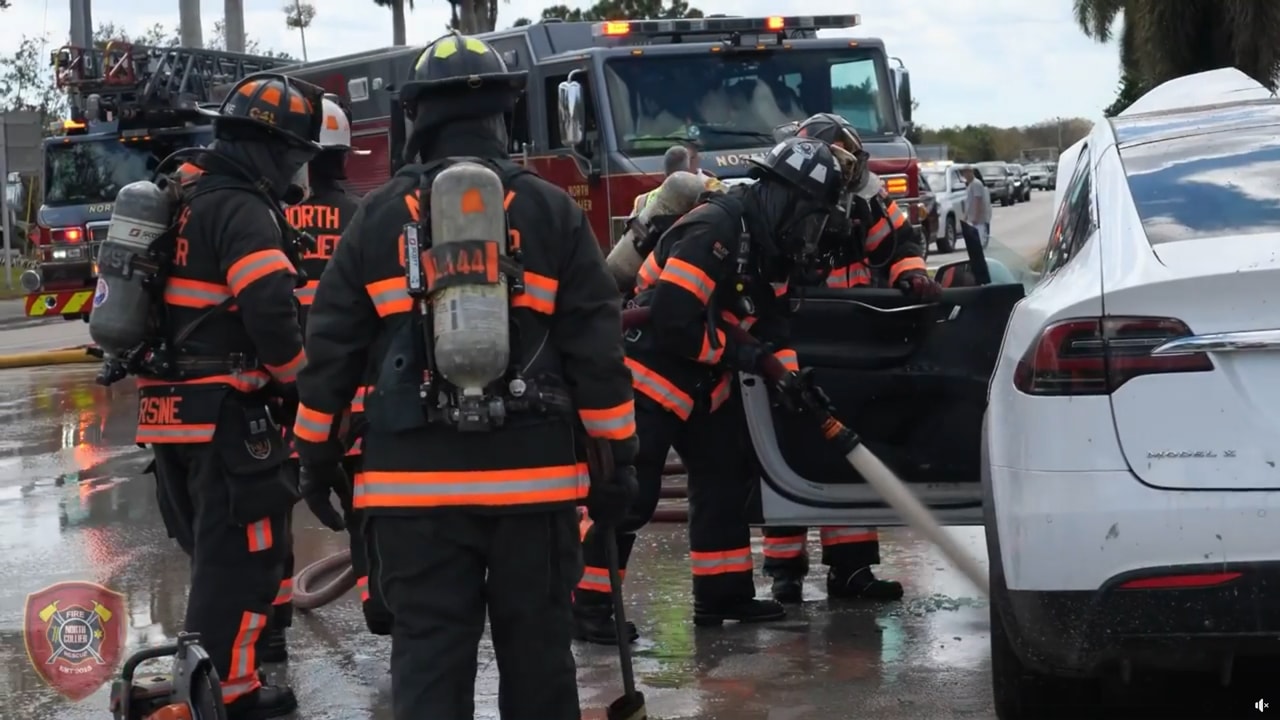- Joined
- Feb 3, 2008
- Messages
- 342
How are the lithium ion fires fought differently, and what does hazmat/hazmat tech engine do with them on scene?
That’s if they knew that started the fire in the first place….. imagine that…."Let's hope" that the Engine firefighter at the apt. door would be alert enough to make notification of the bike reigniting long before it "burned through the line".
Not to belabor the point, but you said "the bike starts up again and burns through the line" - in any event, the door firefighter not being aware of the bike igniting or reigniting would be hard to......imagine thatThat’s if they knew that started the fire in the first place….. imagine that….
LOL, there's still someone at the door ( 2 Engines on the line) - didn't mean that as the Door Man assignment, just there's going to be someone at that doorThe FDNY hasn’t had a door fireman on the rigs for a long time.
All engines have buckets of foam so they don’t need big foam adless big jobAre foam trucks sent to these fires? I'm not that familiar with it but it seems like foam may be needed to extinguish these fires or do the engines carry enough foam to handle?
Foam has a limited impact if any on a Li-Ion battery fire. What is occurring is essentially a chemical reaction within the battery called thermal run away where the battery rapidly overheats and ignites. I should also add that the smoke is significantly more toxic than most carbon-based materials.Are foam trucks sent to these fires? I'm not that familiar with it but it seems like foam may be needed to extinguish these fires or do the engines carry enough foam to handle?
It was very informative when they talked about the fires on the podcast.Foam has a limited impact if any on a Li-Ion battery fire. What is occurring is essentially a chemical reaction within the battery called thermal run away where the battery rapidly overheats and ignites. I should also add that the smoke is significantly more toxic than most carbon-based materials.
The FDNY has been conducting a pilot program where they are submerging the battery in a container of a Class D extinguishing product that encapsulates the battery, which excludes oxygen and ultimately extinguishes the fire.
Check out this podcast with a member of Haz Mat 1 for a much better explanation:
I believe this is the product they are using: https://cellblockfcs.com/cellblockex/
It'll work well on a cell phone or e-bike. Not so much on a, electric vehicle. Rosenbauer has come out with a variation of the piercing nozzle that can penetrate a car's high voltage battery and apply water directly to the battery cells. Not sure if the FDNY is carrying it yet.
Most EV manufacturer's say to use "copious amounts of water" when dealing with a car fire. Try doing that on a limited access highway with no hydrants. I've heard stories of car fires taking 5+ hours to extinguish. I guess that's why they recommend not parking an EV in your garage...
Apparently, the solution that the freightliner industry has come up with when shipping across the ocean is to put any shipping container that has Li Ion batteries on top of the ship and their plan is to simply dump them into the ocean if they catch fire.
As they saying goes, "Every problem has a solution and every solution has a problem." All in the name of "Going Green" I guess.

It was very informative when they talked about the fires on the podcast.
I remember the job in the Bronx where the kids slid down the pipe to get away from the battery fire

 nycfire.net
nycfire.net




